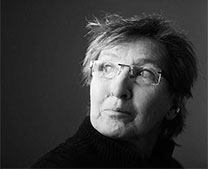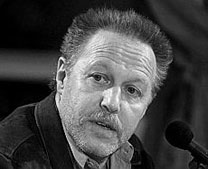


Sune Jonsson: Nine reflections /4
… Their documentation is a distillate of reality itself. Their pictures are freed of all ephemeral, fashionable, and sentimental trappings. They nakedly describe universal situations that are allowed to speak right into the camera. (Sune Jonsson)
NINE REFLECTIONS CONCERNING 1/125th
By Sune Jonsson (1978)
4
One should disdain rules but must discuss principles.
I remember the 50s, when Henri Cartier-Bresson’s books began to come out and started photographers dreaming of the pure photographic image, the prettily arranged and seized 1/125th that was sufficient unto itself. Hasse Enström, Managing Editor of Tidningen Vi, went against that tide at the time, doggedly challenging the theory and requiring text commentaries of photographers offering him picture essays for sale.
In the fall of 1977, while we were stil in our photo-documentary rut and confusion of concepts, a one-volume facsimile edition of Ivar Lo-Johansson’s “social photopicture books” (Lo-Johansson’s own term) was published. The material had originally been published as a reportage series in Vi and can be described precisely as penetrating investigations bases on extraordinary expertise complemented by extensive picture desciptions. These documentaryphotography books, completely neglected by photographers formerly, have been received with a delight that tends to imply that, until they appeared, no documentary photography had existed in Sweden – and that since their publication, no other documentary photography has appeared, either.
That is typical of the murky terminology that equates political picture-activism with documentary photography. For Ivar Lo-Johansson’s part, the books were, of course, sheer political actions. And the photographers were in agreement with his aims and had subordinated themselves to them. But the fact that the polemical content of books like Ålderdom and Statarna i bild also becomes more profound and assumes documentary vigor – despite the book’s describing that no longer exist in this society – is conditions precisely the result of their powerful political content’s being an integral part of the documentary material itself, of the reality that is depicted. Sven Järlås‘s and Gunnar Lundh‘s pictures possess cogency and chastity. Their documentation is a distillate of reality itself. Their pictures are freed of all ephemeral, fashionable, and sentimental trappings. They nakedly describe universal situations that are allowed to speak right into the camera.

At the same time as they enriched their own now, they also became, by the same token, important documentary investments in the future. Preachiness and superficial political meddlesomeness, on the other hand, are ballast that rapidly ages and voraciously eats away at future readability. Both these Swedish photo books, incidentally, are conspicuous parallels to the classic FSA study of the American depression and farm crisis of the 30s. Photographers like Dorothea Lange, Arthur Rothstein, Walker Evans, and Ben Shahn entered into a state project at that time, subordinating themselves to a political purpose but succeeding nevertheless in maintaining their documentary integrity and their crystal-clear photographic intellect. (To be continued on Filmkommentaren with six more reflections…)
FOTOS
Sune Johnsson: Banvakten och arbetsledaren Filip Hörnkvist, Brattsbacka, Nordmaling, tar minuter vid Bergsjø-skärningen, under inspektion av spåret söderut från Brattsbacka, juli 1956.
Finn Larsen, vignet: Opslag i Ivar Lo-Johanssons bog med fotografier af Gunnar Lundh.
http://goldendaysfestival.dk/event/når-asfalten-gynger (Den nuværende udstilling på Hovedbiblioteket i København, få dage endnu)
http://www.filmkommentaren.dk/blog/blogpost/3598/ (Tue Steen Müller om den tidligere udstilling)
https://randersbiografien.wordpress.com/museum-samling/ (Allan Berg Nielsen om Sune Jonsson)